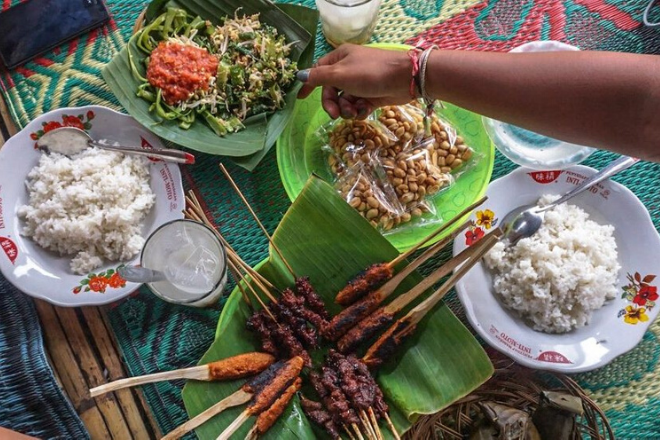By Localiiz
Branded | 17 May 2024
By Localiiz
Branded | 14 May 2024
Copyright © 2025 LOCALIIZ | All rights reserved
Subscribe to our weekly newsletter to get our top stories delivered straight to your inbox.
If you are thinking about going to Bali on your next holiday, take a step back and reconsider your options. Be trendy and book a trip to Lombok, Indonesia, instead—you won’t regret it if you search for a deeper connection with people and places you visit.Conducting and analysing research among more than 22,000 travellers across 29 markets, travel metasearch engine Booking.com predicts that the exploration of unknown places will leap forward in 2020. Insights from over 180 million verified guest reviews reveal that travellers will ditch their original vacation plan for a similar but less crowded destination, especially if it goes hand-in-hand with a reduced impact on the environment.

More than three-quarters the size of Bali, Lombok received only 1.5 million visitors in 2018, compared to Bali’s 6.1 million. The two islands are similar, yet different in many ways. Lombok, the island of 1,000 mosques, persuades with a much slower pace of life, and thus attracts a different kind of visitor to Indonesia. The south, in particular, offers an opportunity to experience a new environmental consciousness and to dive into old folklores.

Unique to the south coast, the Bau Nyale Festival is an annual ritual that serves as a window into traditional art forms still practised in Lombok, including colourful performances of the gendang beleq drums and stick-fighting demonstrations. In Sasak, the language of the main ethnic tribe in Lombok, bau means to catch, and nyale is the name of sea worms.The legend around the festival tells the story of Princess Mandalika. She was so beautiful that it caused friction between several princes from rival clans all over Lombok. Fearful of bloodshed and the break-up of the Lombok kingdom, the princess sacrificed herself by throwing herself into the sea. When Mandalika plunged to her death, the princess swore to return once every year to keep an eye on her subjects. As the appearance of the sea worms is also a once-a-year event, the creatures were considered a symbolic reincarnation of the princess.The festival takes place on the nineteenth day in the tenth month of the lunar Sasak calendar. This is either in February or March each year, towards the end of the wet season.

Lombok’s wet period, running from October through to April, is much drier than Bali’s. However, unlike Bali, where surfing peaks in the dry season, Lombok’s breaks are usually at their best during the wet. Blessed with stunning beaches, the south coast of Lombok is a beguiling surfers’ paradise. From Desert Point in the west to Ekas in the east, the succession of bays, reefs, and rocky inlets offers a high number and quality of breaks. The gentle swells at Selong Belanak beach attract beginner surfers. Intermediate and advanced wave riders find a challenge at the two reef breaks, Mawi and Serangan, on either side of the bay.

Showcasing postcard-worthy views of the Selong Belanak bay from all villas, Selong Selo Resort & Residences sits on a lush hilltop above it. Each of the one- to seven-bedroom villas features an infinity pool and a spacious outdoor area, lending the best panorama of the turquoise sea, which changes colour as the day goes by.Beyond the view and sleek decor featuring a dash of local art and craft, Selong Selo recalibrates the scale of luxury with a robust environmental charter. Centred on the philosophy of “luxury less travelled”, you can start your day by absorbing the delicious aroma of Lombok’s best organic coffee. Sourced from local growers, Selong Selo dries and roasts the beans on-site using an environmentally-friendly technology which utilises rice husks, a farming by-product. During day time, solar panels produce the resort’s electricity demand, and any access is fed back into the grid.Complement the coffee with a yummy breakfast. Head to the hen house and collect the eggs for your omelette. Refine it with fresh herbs and sun-ripened tomatoes picked from the chef’s organic garden. Don’t worry if you can’t finish any of your tasty meals—at Selong Selo, food scraps are turned into compost, which fertilises the gardens.Surrounded by grass and indigenous plants, a meandering path leads from the common pool area to the spa housed in a canopied safari tent. The team of therapists has put together an appealing menu of massages, facials, and body treatments, for which only GMO-free ingredients from ethical and sustainable local farmers are used.

Expect a fiery encounter when sampling the mouth- and eye-watering home-grown dishes. Typical Lombok food is known for its characteristic spicy taste. After all, lombok in Bahasa Indonesian means chilli. A favourite of the natives is nasi puyung. Steamed rice is wrapped in banana leaves, which gives an aromatic adaption, and served with shredded chicken. Chilli, soya fries, and fried grated coconut are other condiments used to refine the dish. If you visit during the Bau Nyale Festival, you must sample sea worms. Mixed with coconut and spices and roasted in banana leaves, your meal can’t get more traditional than this.
Lombok International Airport is the only airport on Lombok. It is approximately 40 kilometres south of the capital Mataram and 25 minutes from Kuta. AirAsia operates a hub at Lombok International Airport and offers direct flights from Kuala Lumpur and Perth. SilkAir via Singapore and Garuda Indonesia via Bali and provide alternative connections to Lombok. Express boat services from Bali to Lombok present an alternative to flying.
Top